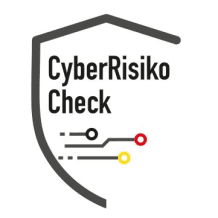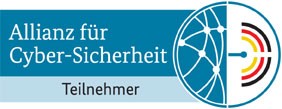Smishing is an increasingly widespread fraud scheme that has become a serious security risk in the digital age. Manipulatively crafted SMS messages are used to trick individuals into revealing personal information, clicking on fraudulent links, or even directly transferring money. The methods of smishing are gaining popularity among cybercriminals due to their simplicity and the fact that SMS messages are often perceived as trustworthy.
What exactly is behind the term smishing? The term combines the words "SMS" and "phishing." Like traditional phishing, which involves fraudulent emails, smishing aims to reach recipients through text messages. However, the attacker uses SMS as the medium, which is typically displayed immediately on the mobile phone and often requires immediate action. This puts the recipient in a state of urgency that can significantly impair rational decisions.
What is the main goal of such attacks? Cybercriminals primarily want to obtain sensitive data. This includes bank details, passwords, or other personal information that can later be misused for financial transactions or identity theft. Often, this is achieved by deceiving recipients into believing that there is an urgent problem with their account or that a seemingly attractive offer is waiting for them. In this emotionally charged situation, victims often act hastily and without the necessary skepticism, which plays into the hands of the perpetrators.
How does smishing work in detail? A typical smishing attack begins with a text message that often has several characteristic features. First, the message is often impersonal and formal, sometimes with a pressure that signals to the recipient that it is an authentic message from a known institution. The message may demand that the recipient click on a special link to supposedly resolve issues, check the status of an account, or return a missed call. The messages frequently contain dramatic phrases like "Your account has been temporarily suspended" or "Urgent security verification required!".
Another aspect that makes smishing so dangerous is the use of fake websites. If the victim clicks on the embedded link, they typically end up on a website that closely resembles that of an official institution. On this page, the user is then asked to enter sensitive data, which will subsequently benefit the criminals. These techniques are often so cleverly developed that they can mislead even cautious internet users.
What risks and damages can arise from smishing? The consequences of a successful smishing attack can be severe. In the case of identity theft, the stolen information may not only be used for financial fraud but also to carry out further fraudulent activities. Financial damage, loss of personal privacy, and a significant loss of trust in digital communication media are just some of the possible negative effects. Particularly older individuals or those without extensive IT knowledge are often the target of such attacks, as they often lack the technical knowledge to see through fraudulent attempts.
Why is SMS as a communication channel so effective for fraudsters? A crucial factor is the ubiquitous usage of mobile phones and the trust that most people place in their SMS applications. Many users are not aware of the risks associated with opening SMS messages or consider them harmless because they often come from friends, acquaintances, or known companies. Cybercriminals know exactly that in a world where almost everyone connects with a mobile phone, just using the SMS channel allows for immediate, extensive reach. Additionally, SMS messages are often shorter and more concise, which may lead to the content being questioned less critically.
What signs indicate a possible smishing attack? There are several indicators that make it possible to recognize fraudulent messages early. Some of the most common signs include an impersonal address, grammar and spelling errors, as well as a sense of urgency in the tone that pressures the recipient. Always ask yourself: "Why should I act immediately?" Another important aspect is that official institutions like banks or insurance companies usually never request sensitive information via SMS. Therefore, any request to confirm data or disclose passwords should be viewed with great skepticism.
Current smishing examples from practice illustrate the variety of attack patterns. In many cases, victims receive messages that supposedly come from their own bank and indicate that there have been unusual activities on the account. Another common ruse is the promise of an unexpected prize or special offer that can only be redeemed by following a link or providing certain personal information. It becomes particularly tricky when fraudsters try to adapt to personal preferences or current events, such as sending SMS during major shopping events or in current crisis situations. The attackers deliberately exploit users' increased need for security to entice them to quick and thoughtless actions.
How can individuals and companies protect themselves from smishing attacks? There are several strategies that can significantly reduce the risk of such fraud attempts. The first and most important measure is awareness. Users should be regularly informed about current fraud schemes, for example through security newsletters, workshops, or internal training in companies. A critical view of unexpected messages and healthy skepticism when verifying sender information is essential here.
Another protective mechanism is the use of technical aids. Modern smartphones and operating systems now offer numerous security features, such as marking suspicious messages or blocking certain senders. Operating systems and apps should always be kept up to date to close known security gaps. Furthermore, the use of reliable security software that specifically looks for anomalies and suspicious activities is recommended.
Companies can also adopt specific measures to protect their customers and employees. This includes implementing multi-factor authentication (MFA) for access to important systems and accounts. Regular security training and tests, such as simulated phishing campaigns, can strengthen security awareness in the company and thus provide more protection in the long term. Another important element is close collaboration with IT experts and security service providers who continuously monitor current developments in the field of cybercrime and can recommend appropriate countermeasures.
What questions often arise in connection with smishing? Here are some examples:
1. What exactly is smishing and how does it differ from email phishing?
2. How can I distinguish an authentic SMS from a fraudulent one?
3. What technical protective measures can be deployed against smishing?
4. How should I behave if I suspect that I have become a victim of a smishing attack?
5. What role do mobile operators and software providers play in the fight against smishing?
To answer the first question: Smishing is a form of social engineering that occurs via SMS, while phishing is typically conducted via email. Both methods share the common goal of obtaining personal and confidential data. However, the essential difference lies in the communication channel used and the associated security precautions. While emails are often intercepted by specialized spam filters, SMS messages often reach the recipient directly and unobstructed.
For the second question, it is essential to emphasize that authenticity should always be viewed with skepticism when unexpected messages arrive. A typical feature of fraudulent SMS is errors in language or unusual expressions that do not fit the style of the alleged source. Furthermore, one should never perform unsolicited requested actions, such as clicking on links or entering personal data, without additional verification.
The third question addresses technical solutions: Security software and regular updates of mobile operating systems represent the first line of defense. Some providers have already developed special filters that automatically mark suspicious SMS. Additionally, special apps that check callers and SMS for their trustworthiness can provide additional protection. Again, it holds true: Security-conscious behavior can significantly reduce risks, as technology alone rarely suffices to cover all attack vectors.
In the event of a suspected smishing attack, those affected should act immediately according to the fourth question. First, it is essential to stay calm and avoid hasty actions. An immediate M
Smishing in Germany: Current Developments
The significance of smishing in Germany is continuously growing. According to recent studies by the Federal Office for Information Security (BSI), German companies are increasingly affected by cyber threats. The Bitkom association reports that 84% of German companies have fallen victim to cyberattacks in the last two years.
Especially in the area of smishing, the following trends are evident:
Increasing investments in preventive security measures
Heightened awareness for comprehensive security concepts
Integration of smishing into existing compliance frameworks
EU Compliance and Smishing
With the introduction of the NIS2 Directive and tightened GDPR requirements, German companies must adapt their security strategies. Smishing plays a central role in meeting regulatory requirements.
Important compliance aspects:
Documentation of security measures
Regular review and updating
Proof of effectiveness to regulatory authorities
Practical Implementation in Corporate Daily Life
Integrating smishing into corporate daily life requires a structured approach. Experience shows that companies benefit from a stepwise implementation that considers both technical and organizational aspects.
Think of smishing as an insurance for your company: The better prepared you are, the lower the risk of damage from security incidents.
Further Security Measures
For a comprehensive security strategy, you should combine smishing with other security measures:
Vulnerability Management - Systematic vulnerability management
Penetration Testing - Comprehensive security tests
Security Hardening - Employee awareness
Incident Response Plan - Preparedness for security incidents
Conclusion and Next Steps
Smishing is an essential building block of modern cybersecurity. Investing in professional smishing measures pays off in the long term through increased security and compliance.
Would you like to optimize your security strategy? Our experts are happy to assist you with the implementation of smishing and other security measures. Contact us for a non-binding initial consultation.
🔒 Act now: Have our experts evaluate your current security situation
📞 Request advice: Schedule a free initial consultation on smishing
📋 Compliance check: Review your current compliance situation
📌 Related topics: Cybersecurity, IT security, compliance management, risk assessment




